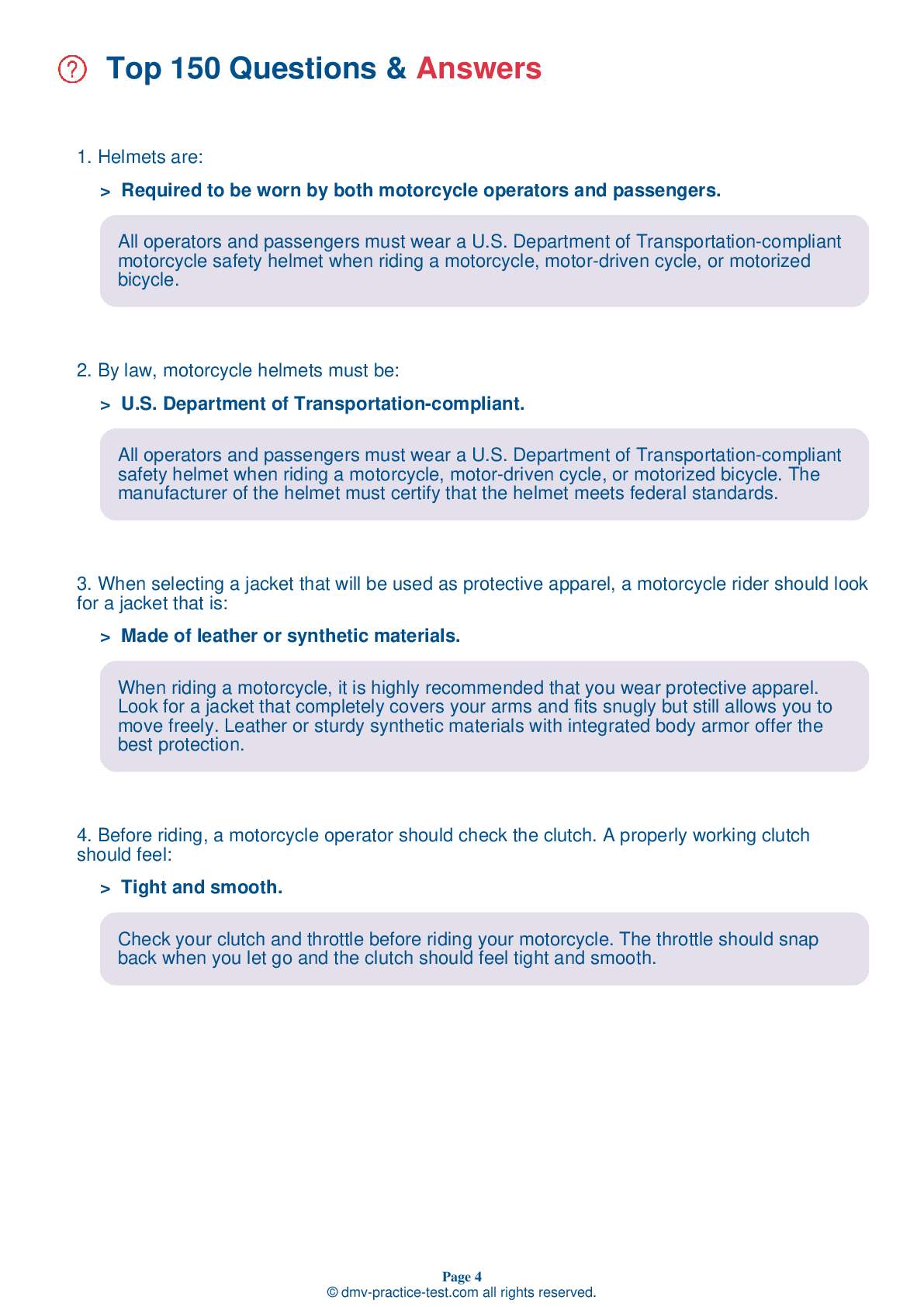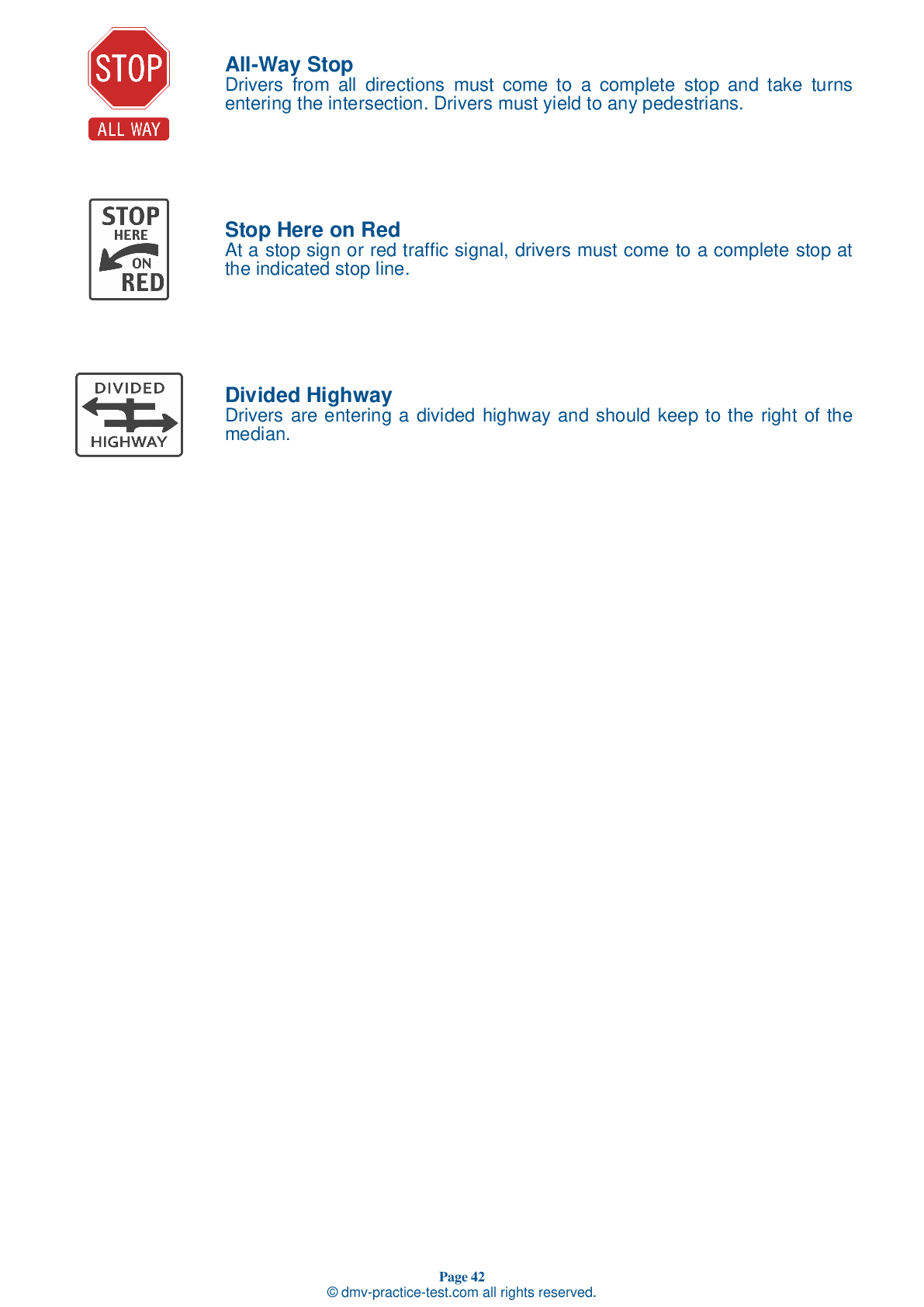Motorcycle Test | License CA 2025 | FREE Online Practice! #7
Take this FREE motorcycle test (license in CA 2025) to check your knowledge of the road rules. To improve your results, download a motorcycle handbook online, study theory, and practice for free on our website. Still worried about how to get a motorcycle license in California in 2025? Check our website for more sample tests, train as much as possible, and boost your grades!
1 . A DOT-compliant helmet:
While some people believe that a helmet will limit their vision, this is not the case. Any U.S. Department of Transportation-approved helmet will allow the wearer to see as far as is needed for safe riding.
2 . When approaching an intersection, a motorcyclist should not:
As you approach an intersection, select a lane position that will make you the most visible to other drivers and cover the clutch and both brakes to reduce your reaction time. Reduce your speed when approaching an intersection. Avoid changing your speed or position radically as doing so may cause surrounding drivers to misinterpret your intentions.
3 . If you are being passed, you should:
When being passed, the center portion of the lane is generally the safest lane position for a motorcyclist. Riding on the side nearest the passing vehicle increases the risk of colliding with it. Riding on the side farthest from the passing vehicle can also be dangerous because it may prompt the driver to return to your lane before it is safe to do so.
4 . When riding downhill or shifting into first gear, you may need to:
Before shifting into a lower gear, make sure you are riding slowly enough. Downshifting while going too fast may cause the motorcycle to lurch and make the rear wheel skid. When riding downhill or shifting into first gear, you may need to use the brakes to slow to a safe speed before downshifting.
5 . How do convex mirrors differ from regular mirrors?
Convex mirrors are installed on many motorcycles. Compared to flat mirrors, convex mirrors provide a wider view of the road. However, convex mirrors can also make approaching vehicles seem farther away than they actually are.
6 . The rules of the road as outlined in the California Vehicle Code:
The rules of the road as outlined in the California Vehicle Code apply to all two-wheeled vehicles. If any two-wheeled vehicles are operated on a highway, they must meet applicable equipment, registration, financial responsibility, licensing, and operational requirements.
7 . Upshifting or downshifting in a curve:
It is best to change gears before starting a turn. However, if you must shift while turning, shift smoothly. A sudden change in power to the rear wheel can cause a skid.
8 . Should you wear gloves while riding a motorcycle?
Wearing gloves while riding provides an improved grip and help protect your hands. You should use gloves that are full-fingered and made of a durable material.
See the exact questions that will be on the 2025 California DMV exam.
99.2% of people who use the cheat sheet pass the FIRST TIME
Jeneen was tired of paying $5/gallon. She got herself a scooter that required the motorcycle license. She studyed the motorcycle test cheat sheet and passed her test the next day!
Christopher tells us how he knew nothing prior to obtaining the motorcycle study guide, and he only got one question wrong because he clicked on the wrong answer by mistake.



